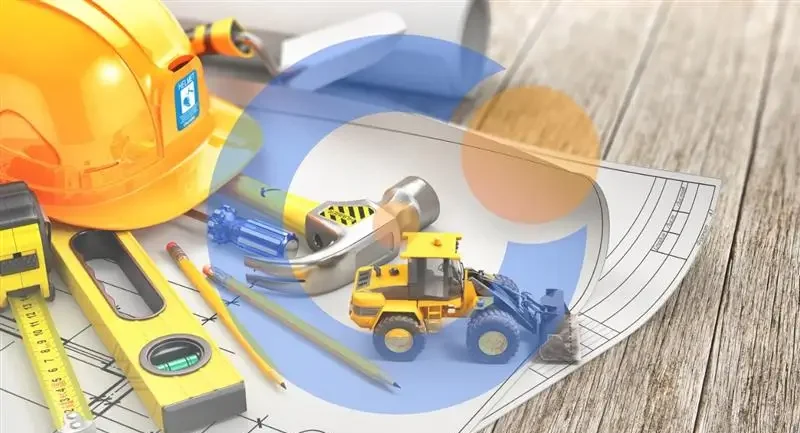Each year, workplace accidents cost US firms billions of dollars. Workers’ compensation payments cost companies $1 billion a week, according to OSHA. Some expenses occur from the days when workers with injuries are absent from work.
Employees with injuries and accidents are required to miss a minimum of six workdays annually. Construction-related deaths affect at least one worker out of every five. OSHA may impose a maximum fine of $13,653 to $13,6532 for safety infractions.
Employers in the US pay over 62 billion dollars annually as a result of this. Incorporating a safety culture inside your company will significantly lower these expenses. By enrolling in courses like OSHA 10-Hour and OSHA 30-Hour, this may be avoided.
Enhancing a company’s safety culture should be seen as an investment rather than an expense. Maintaining the health of employees is the goal of having a strong safety culture. To create a safety culture, businesses should tailor all safety communications to the individual employees and provide training such as OSHA 30. For managers, employees with safety responsibilities, and construction supervisors, OSHA 30-Hour is a 30-hour training program. It offers a thorough grasp of OSHA rules and regulations and goes deeper into hazard identification, prevention, and management. OSHA 30-Hour graduates are therefore prepared to design and carry out efficient safety programs on building sites.
The significance of OSHA 30-Hour Training in improving job site safety is examined in this article. Here are the some insights on how the OSHA 30-Hour online training is promoting a safety culture at construction sites.
Employer Responsibilities
Employees and employers can get training from the online course on identifying, avoiding, mitigating, and preventing health and safety risks at work. Additionally, the program offers details on company obligations, worker rights, and complaint procedures.
Identification of the Risks
By choosing this course, the employer will be able to recognize various dangers and hazards brought on by a shortage of room near electrical equipment and will be able to lower the likelihood of accidents at the workplace by providing enough supervision. By safeguarding the wellbeing of the staff, he will be able to ensure their safety.
Fall Protection
In the construction business, fall protection is the most commonly cited OSHA violation. This standard demands fall protection equipment in construction operations where workers are exposed to vertical drops of six feet or greater. It encompasses personal fall arrest systems, safety net systems, and guardrail systems.
Given that falls are the primary cause of fatalities in the construction sector, the OSHA 30-Hour online course places a strong emphasis on the necessity of fall protection. It addresses how to use personal fall arrest devices, safety nets, guardrails and more correctly.

Scaffold Safety
The purpose of the OSHA scaffolding standard is to safeguard employees who use or are employed on scaffolding at heights of 10 feet or above. It describes the specifications for the planning, building, and usage of scaffolds as well as the instruction of personnel in scaffold safety.
Since scaffolds are frequently used in building projects, scaffold safety is essential to the training. Scaffold kinds, danger detection, correct usage, and inspection processes are all included in the OSHA 30-Hour online training.
Electrical Safety
This standard of OSHA covers safety precautions to guard against electric shock risks for workers. This covers the usage of ground-fault circuit interrupters, handling extension cables safely, and providing workers with training in case they come into touch with live electrical components.
Construction workers are seriously at risk from electrical risks. Essential electrical safety methods are covered in the training, such as appropriate grounding, lockout techniques, and the usage of personal protective equipment (PPE).
Personal Protective Equipment
When there are possible workplace dangers that might result in diseases or injuries, companies are required under the Personal Protective Equipment (PPE) standard to supply workers with protective gear. Items like hard helmets, safety glasses, gloves, and respiratory protection are examples of this equipment.
For worker safety in the construction sector, personal protective equipment (PPE) must be used properly. PPE comes in a variety of forms, and this course covers how to use, maintain, and use them safely.
Hazard Communications
The purpose of the Hazard Communication standard is to guarantee that employers and employees are informed about the identities and risks of chemicals. This entails creating a documented program for communicating hazards, keeping an MSDS (material safety data sheet) for any chemical that poses a risk, and educating staff members on the dangers of these substances.
This course’s hazards section also covers asbestos, lead, silica, and noise exposure, along with risk management techniques.
Participants also gain knowledge of the risks connected with enclosed areas, including engulfment, poisonous atmospheres, and oxygen shortages, as well as the required paperwork, entrance protocols, and rescue strategies.
Ergonomics
Work-related musculoskeletal disorders (WMSDs) can occur in workers who often lift, crouch, kneel, twist, grasp, stretch, reach overhead, or perform other uncomfortable poses as part of their job duties. OSHA 30-Hour training also covers ergonomic risks, such as material handling and repetitive motion accidents, and offers preventative measures for musculoskeletal illnesses.
Excavation and Trenching
It’s risky to work in an exposed trench. The walls might fall suddenly and unexpectedly. When this occurs, employees are unable to shift or to make room for themselves. The course explores the risks that come with trenching and excavation, including engulfment and cave-ins. It talks about the protective systems and safety precautions that ought to be in place to lessen these dangers.
In these ways, the training promotes a safety culture in the workplace. Workers are empowered to take responsibility for their own safety as well as the safety of their coworkers by receiving training that equips them with the information and abilities to identify, report, and resolve dangers. Overall workplace safety may be significantly improved over the long run by using this OSHA 30-Hour online course.
Certifications
Obtaining an OSHA 30-Hour DOL card confirms to potential employers that you have finished 30-Hours of OSHA-approved training covering critical occupational safety themes particular to your field. Supervisors and workers can prevent mishaps and maintain secure and efficient work environments with the help of this certificate.
Conclusion
OSHA is devoted to preserving workplace safety through its regulations, which all workers in the construction and general industries are required to abide by. OSHA 30-Hour training is for all workers and employees who are exposed to workplace dangers; it assists you in creating a work culture centered on job safety. Additionally, you will learn about the policies, procedures, and essential safety measures in accordance with OSHA regulations through the OSHA 30-hour course. In-depth knowledge of potential dangers is also provided by the OSHA 30-Hour online course, which will equip you and your staff to handle unanticipated mishaps and any work-related risks.








